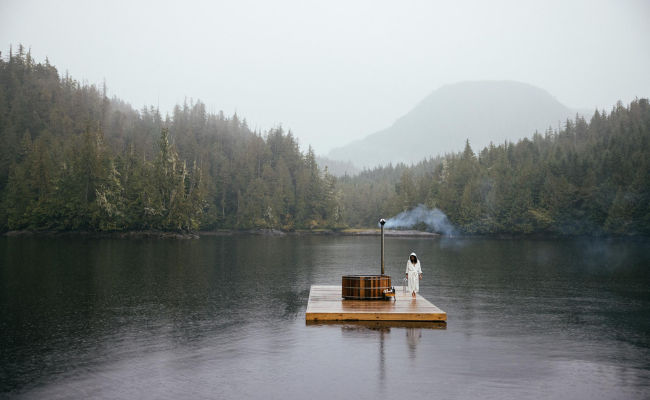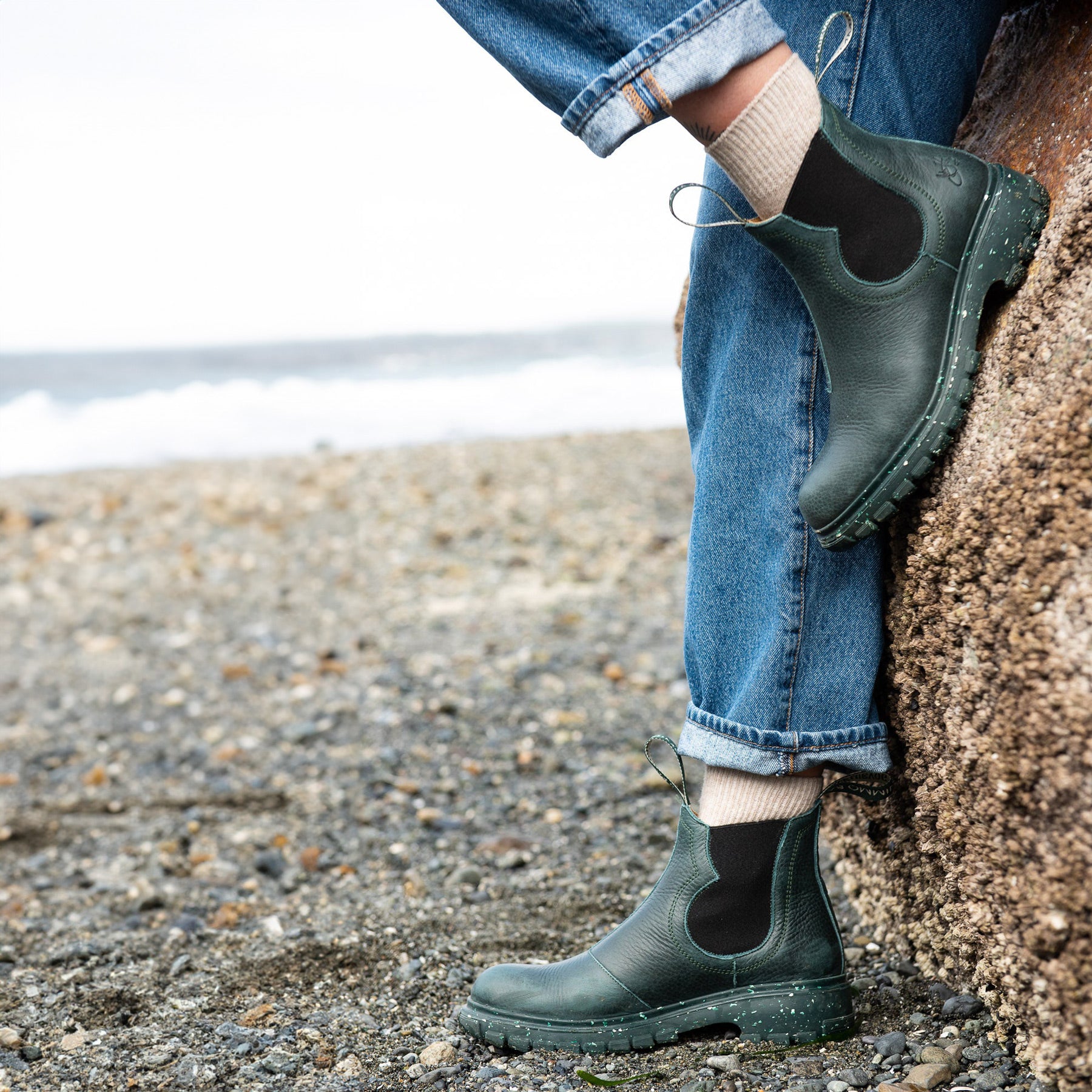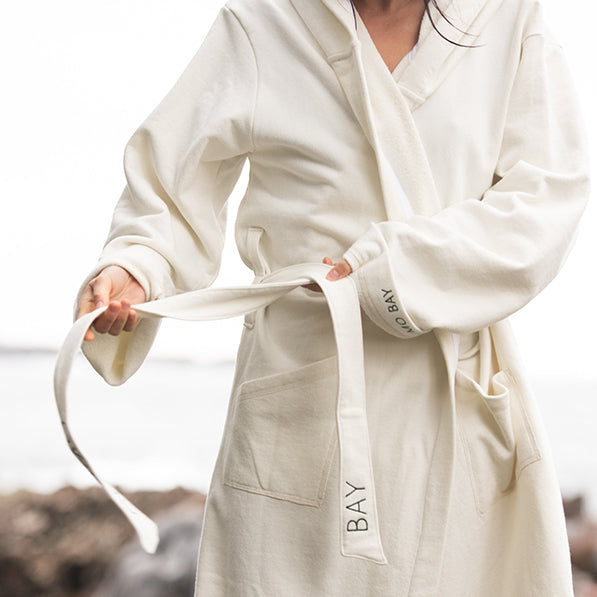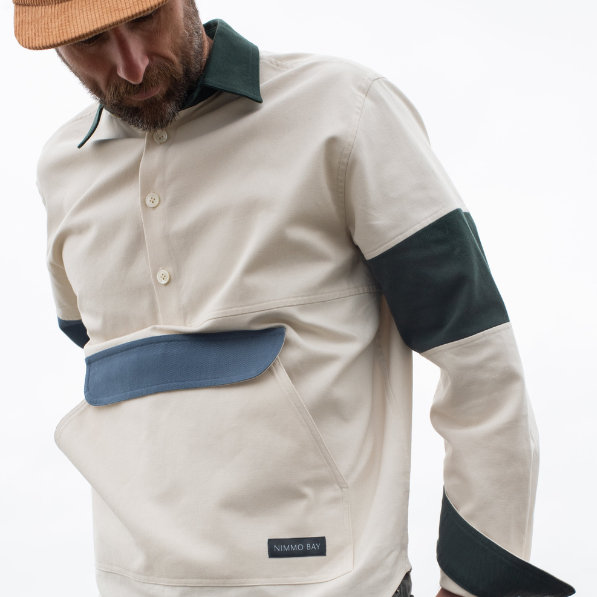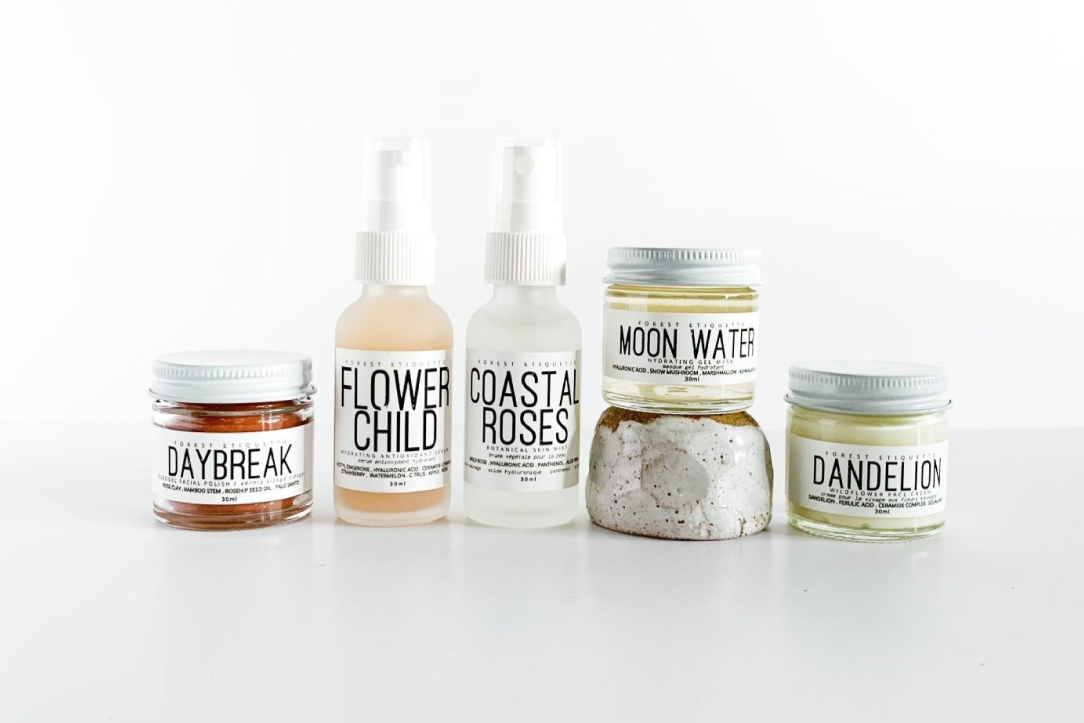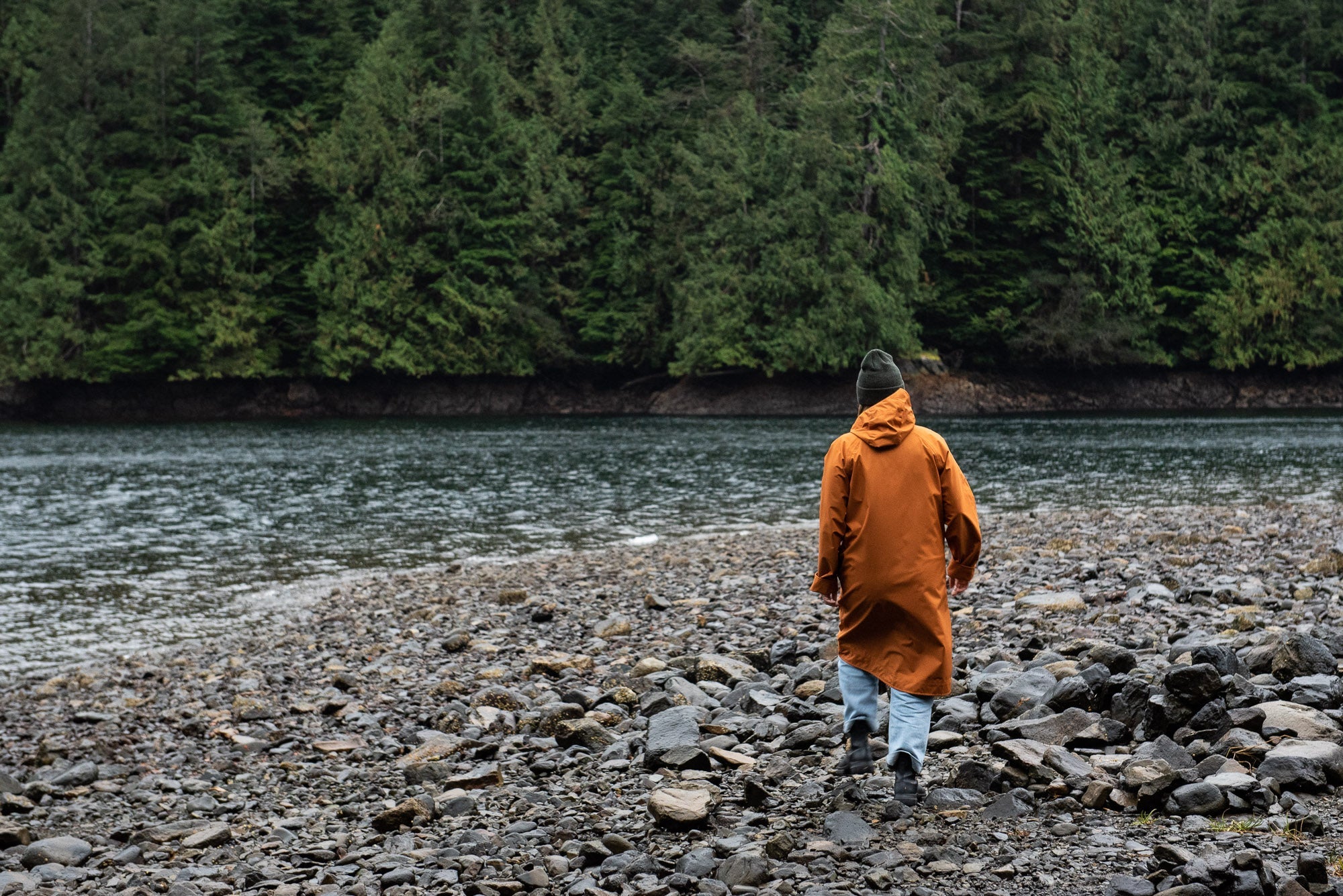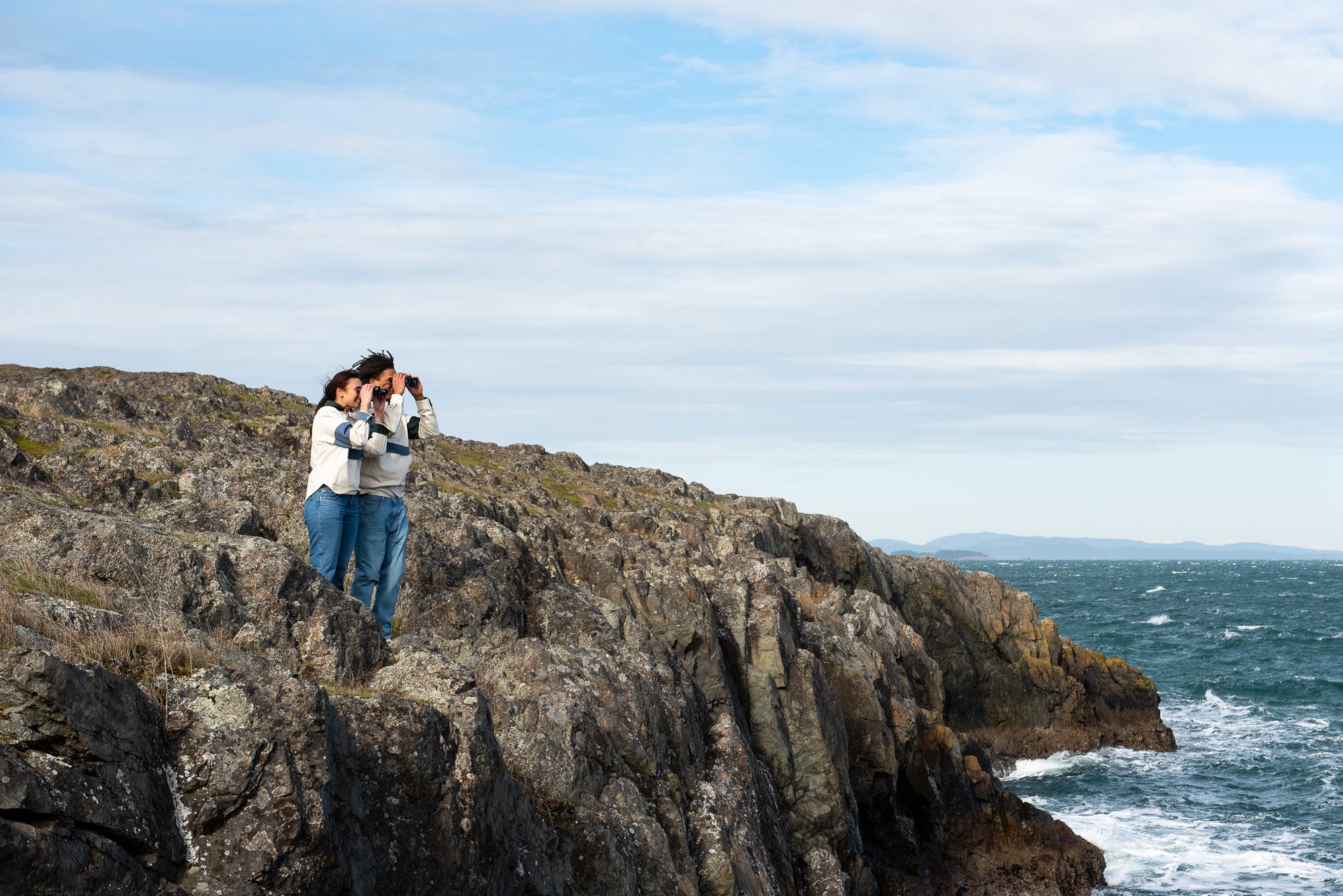
Meet the Maker: Upper Form
Timeless, classic, wearable for every single kind of adventure, these are the words we use to describe the brand-new Upper Form Regatta Shirt. Put on one of these custom-made shirts in our Nimmo Bay colours, and you’ll be the envy of every person you pass by, from the beach to the city.
We caught up this month with Anne Muller, founder and one-woman powerhouse running Upper Form and creating all these pieces by-hand. Learn about what it’s like to make retro, high-quality clothing, and get inspired by the outdoors of New England.

Can you provide a short introduction to Upper Form and your clothing?
I started Upper Form in early 2021 out of a studio in an old factory on the seacoast in New Hampshire. I design, pattern, hand-cut, and single-needle stitch every piece to order, using only natural fibers — cotton, linen, and wool — prioritizing organic, Oeko-Tex certified (meaning you can be certain every component of this article has been tested for harmful substances and that the article is harmless for human health), and North American textiles.

How did the journey to starting Upper Form unfold?
I have a background in fine art and digital design. But when Covid lockdowns happened in 2020 and I started making clothes for myself as a hobby, I found that there was something immensely fulfilling about making objects that were not only tangible but functional as well. I enjoyed the process of designing, pattern-making, and sewing so much that continuing it in a brand setting and sharing it with others seemed like the natural next thing to do. I was also incredibly fortunate to meet Tony of Tony Shirtmakers, based out of Damariscotta, Maine, shortly after. He took me under his wing as an apprentice and has shared with me his incredible wealth of knowledge concerning many of the finer aspects of finishing handmade clothing.
What is it like running Upper Form as a solo venture?
The creative freedom is unparalleled. I love getting to piece together all the different aesthetic parts of the business — the clothing designs, the color palettes, the product photography, the graphic and web design. I joke that when I get tired of sewing, there’s always something else to work on. I have a background in digital design, so it’s nice to flex those muscles from time to time, but it’s also been incredibly gratifying to pick up new skills along the way, particularly photography.
The only downside of working solo is the pace at which I’m able to operate — which is to say, a bit slower than perhaps I’d like. The process of launching a new style from the time I first start working on it can take up to six months. Then there’s the production side of things — the actual cutting and sewing and finishing — that makes up most of my day-to-day time in the studio. I find the work very meditative.
What is the leading intention and inspiration behind the tops you create?
As a kid, I wasn’t a huge fan of hand-me-downs, but as I got older I began to treasure the clothes that were given to me after having been loved and worn by family members for many years. Items were generally of one of two kinds: retro athletic wear, or these beautiful, timeless pieces from my mother and grandmother that were overwhelmingly made of natural fibers — linens, cottons, and wools. I loved the stories behind these clothes — like where they were from and where they were worn.
I wanted to create clothes that would bridge the gap between the two types of clothing I inherited — retro, relaxed, athletic clothes and these sorts of elevated, high-quality formal garments made of beautiful, natural textiles. I wanted clothing that would look like it could come right out of a photograph from the seventies and eighties, yet still be perfectly at home in 2023. The sort of clothing that evokes memories of carefree days spent on the green or at summer camp, of varsity jackets, college sweaters, sailboats, and sun-faded blue jeans.

What is your process for creating new pieces?
New pieces start as ideas that hang out in my head for a few months before making it onto paper. After that comes a prototyping phase (my closet — and my partner’s, and my friends’ — are full of almost-just-right pieces from this stage). Mostly, the pieces I make are just items of clothing I really want to wear. With features that I’d like to have — the double pocket of the Regatta shirt, for example, with its inner secure compartment for valuables, was inspired in part because I have a lovely habit of breaking my phone when it slips out of side pockets. I also wanted a shirt to wear on windy days at the beach — with a spot to put my car keys so I wouldn’t be worrying about losing them in the sand.
How does your surrounding environment / home influence your brand and products? Plus, how does Upper Form inspire the wild within and connect people to place?
New England definitely has a certain aesthetic sensibility, a bit preppy, a bit outdoorsy, a bit nautical. Though however it’s described, it is impossible to deny that the classic staples of the region — L.L.Bean, Johnson Woolen Mills, G.H.Bass and Co, to name a few — have remained unchanged for the past 100 plus years. This is the tradition in which I aspire to participate: one which places an emphasis on quality over quantity, on history over novelty.
The environment here also forces a sense of practicality in dress. For two thirds of the year, you are probably wearing more than one layer, and even the hottest days of summer might require a layer to break a brisk nighttime ocean breeze. My pieces are meant to fit easily into a classic wardrobe — to be thrown on over a sweater or a turtleneck in the colder months, or a pair of jean shorts in the summer. The weather here can be rugged — but it doesn’t mean you have to compromise on style!

Tell us how you embody the principles of sustainability?
I think the most important thing when making a garment out of new material is to construct the garment in such a way that it is as durable as possible. Ensuring the longevity of a garment is the best way to make sure it stays in use and out of a landfill. There are three main things I think about when I consider longevity.
The first is physical construction: I take care to use the strongest seam types and to reinforce any areas of the garment that may experience stress.
The second considers material: not only the durability of the material itself, but its provenance and environmental impact. For my heavier pullovers, I like to use heavy-duty fabrics that become softer over time and conform to the shape of the wearer. Cotton canvas and denim — organic whenever possible — will truly last indefinitely when cared for and can withstand rough-and-tumble wear. Plus, as natural fibers, they won’t shed micro-plastics throughout their lifespan, as so many synthetic materials do.
My third concern is style. It’s something that’s always subjective I suppose, but certainly contributes to a garment’s longevity. It is important to me to make clothes that are less oriented towards what’s popular right now and more towards classic and timeless silhouettes. I don’t want my garments to be worn just for a single fashion season or even a year; I want them to be worn for a lifetime — hopefully, more than one.
What is the life that you dream of for your clothing pieces? (Ex. Where would they live/get used/ what would they do, would they get used everyday or on special occasions)
Ideally, the clothes I make never get put away! They’re rarely found hanging in the closet; rather, they live on the hook next to the front door, or stuffed into the boat bag, or tossed onto the back seat. They’re meant to be worn, and worn in. To get dirty, washed, and worn again. To become soft and faded by the sun and wind. To be cherished but not fussed over. To be borrowed, beat-up, mended, and, one day, passed on.

Shop our Upper Form Collection.


